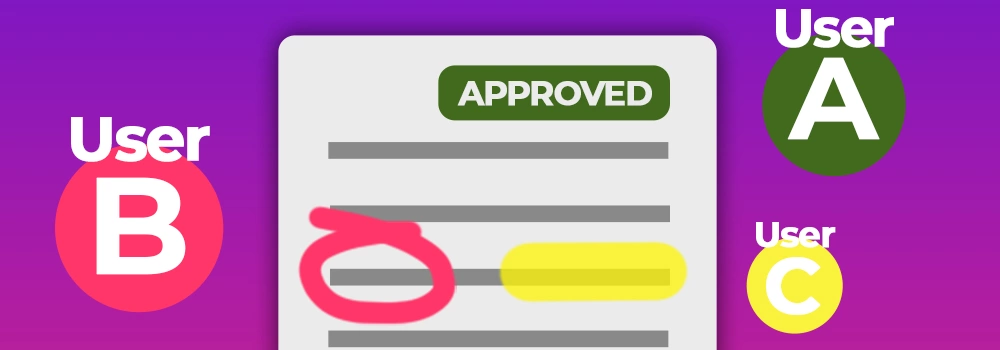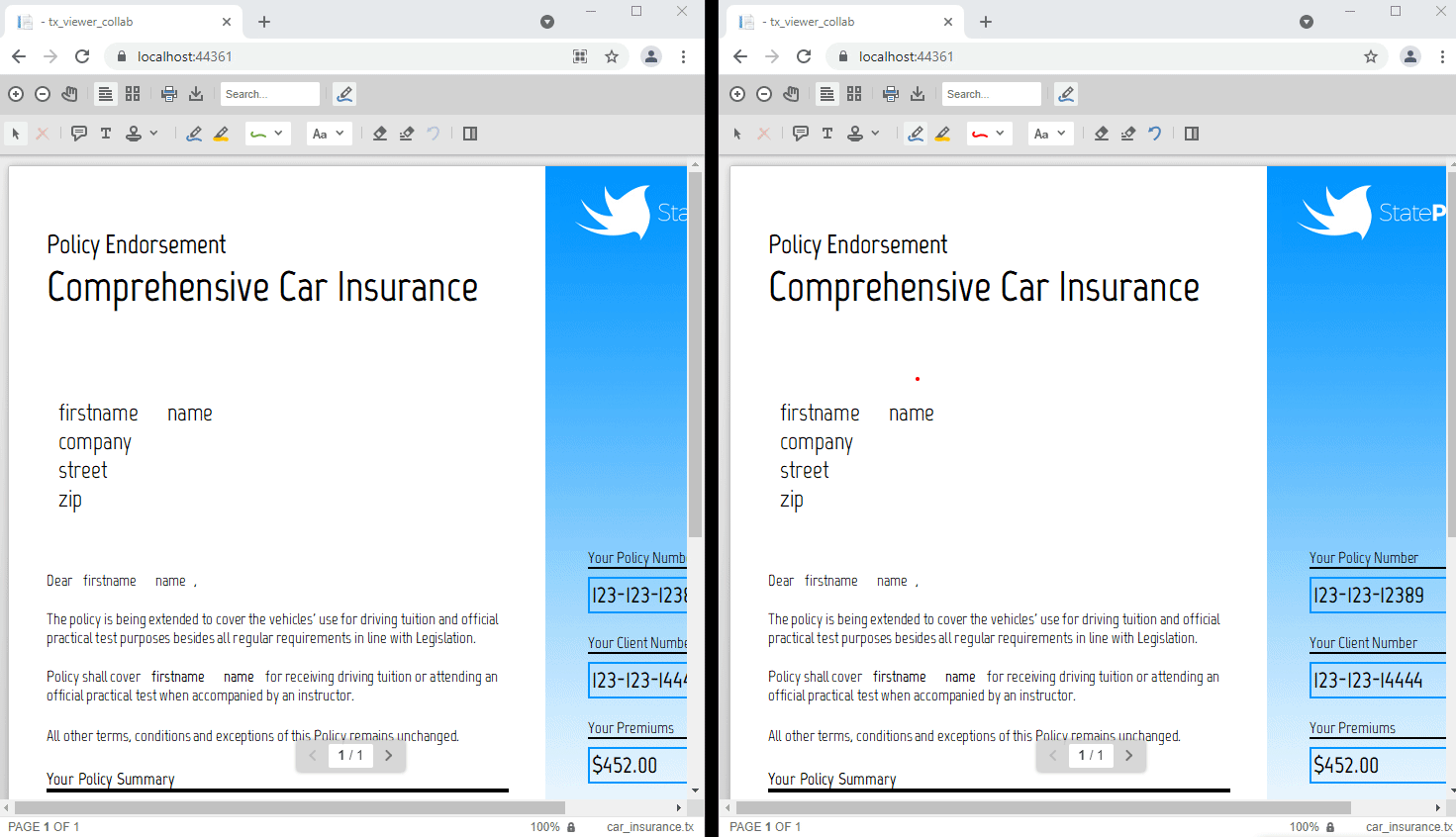DocumentViewer Collaboration: Live Share Document Annotations
Digital collaboration became the norm in today's modern business world. Adding real-time document collaboration adds a significant value to applications to increase productivity for your users. This sample shows how to share document annotations live with other users using SignalR.

In many document processes, a streamlined collaboration workflow enables an enormous productivity gains. In today's modern structures and specifically and remote work setups, collaboration processes are required to keep and increase productivity.

There are many commercial "out-of-the-box" tools and services to share documents. But integrating document review and approval workflows directly into your applications helps to streamline those processes and to keep your data in your own infrastructure.
Full Integration
Using TX Text Control and the DocumentViewer, documents can be shared across platforms and browsers. The DocumentViewer can be used to:
- Share documents
- Complete form fields
- Request signatures
- Add annotations
Event Handling
With the latest pre-release version of the DocumentViewer, we introduced an event handling for annotation changes. The following JavaScript code shows how to add this event handler:
TXDocumentViewer.addEventListener(
"annotationsChanged",
function() { alert("annotation changed!"); });The sample in this article uses this new event and SignalR to synchronize annotations and annotation changes with other users.

Comments are also synchronized automatically when adding them to the annotations:

Using SignalR
The sample implements a very simple class AnnotationSync that is shared with all connected users in the SignalR Hub:
public class CollabHub : Hub
{
public async Task SetAnnotationSync(AnnotationSync annotationSync)
{
await Clients.All.SendAsync("ReceiveAnnotationSync", annotationSync);
}
}
public class AnnotationSync
{
public string User { get; set; }
public string AnnotationJson { get; set; }
}The AnnotationJson can be exported and imported into the DocumentViewer and contains all annotations. It is a very small JSON package and therefore, it can be easily shared to synchronize the changes. The following JavaScript code shows how to listen for the SignalR changes in order to load the JSON into the DocumentViewer:
var _updating;
var _connection;
// connect to signalr hub
_connection = new signalR.HubConnectionBuilder().withUrl("/collabHub").build();
_connection.start();
_connection.on("ReceiveAnnotationSync", async function (annotationSync) {
// set flag to avoid infinite loops
_updating = true;
var currentJson = TXDocumentViewer.annotations.export();
if (currentJson != annotationSync.annotationJson)
TXDocumentViewer.annotations.load(annotationSync.annotationJson);
setTimeout(function () {
_updating = false;
}, 1000);
});Finally, the event annotationsChanged is used to export the annotations in order to invoke the server-side synchronization:
window.addEventListener("documentViewerLoaded", function () {
TXDocumentViewer.addEventListener("annotationsChanged", updateAnnotations);
});
function updateAnnotations() {
if (_updating === true)
return;
var jsonAnnotations = TXDocumentViewer.annotations.export();
// create sync object
var collaborationSyncObject = {
User: "Test",
AnnotationJson: jsonAnnotations
};
// call signalr hub with sync object
_connection.invoke("SetAnnotationSync",
collaborationSyncObject).catch(function (err) {
return console.error(err.toString());
}
);
}Download Sample
You can test this on your own by downloading the sample form our GitHub repository.
![]()
Download and Fork This Sample on GitHub
We proudly host our sample code on github.com/TextControl.
Please fork and contribute.
Requirements for this sample
- TX Text Control .NET Server (trial or trial token)
- Visual Studio 2019
ASP.NET
Integrate document processing into your applications to create documents such as PDFs and MS Word documents, including client-side document editing, viewing, and electronic signatures.
- Angular
- Blazor
- React
- JavaScript
- ASP.NET MVC, ASP.NET Core, and WebForms
Related Posts
Smart Documents: Embedding Documents in PDF Containers
TX Text Control is able to embed and extract embedded files to and from PDF documents. This can be used to create smart document containers that consists of the original document for editing and…
DocumentViewer Annotations: Highlight Text
We just published a pre-release version of the DocumentViewer that includes a new annotation feature: Text highlights. It is now possible to select text to add a comment at a specific text…
ASP.NETAnnotationsCollaboration
DocumentViewer Pre-Release: Stamps, Sticky Notes and Comments
We just published a pre-release version of the DocumentViewer that supports an extension of the annotation feature. It is now possible to insert custom stamps, sticky notes and comments.
ASP.NETAnnotationsDocumentViewer
DocumentViewer: Aspect Ratio Scaling of Signature Annotations
In the latest version of the DocumentViewer, signature annotations can be scaled by keeping the aspect ratio. This article gives a quick overview of signature annotations and this new feature.
Deploying Documents with Annotations
The DocumentViewer allows to add and share annotations from different users to any type of document supported by TX Text Control including PDF, DOC, DOCX, RTF and the internal TX Text Control…






